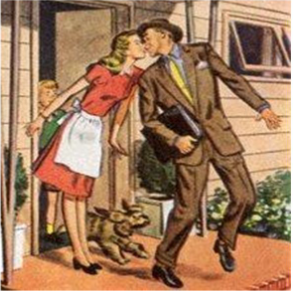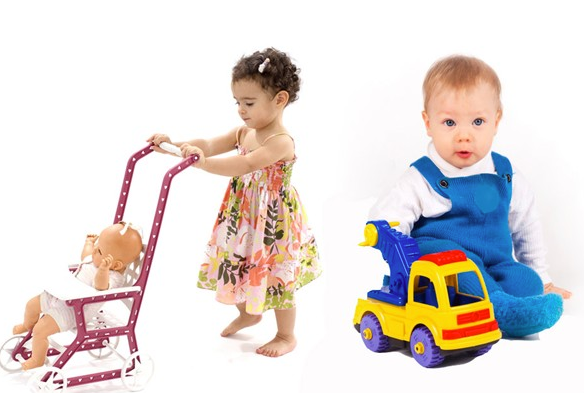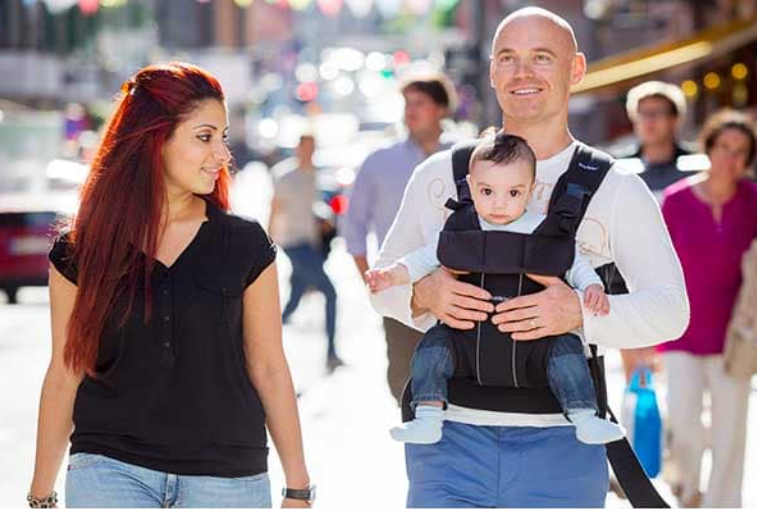Background
The subject of gender role has significantly transformed in the modern society compared to the traditional perspective. Traditionally, roles and responsibilities were assigned according to gender. Men were given superior role that depicted them to be important members of the society than women who were assigned inferior roles that involved taking care of the family and doing house chores. Men were majorly assigned roles that involved generating income and protecting the community (Andersen & Witham, 2011). However, the contemporary society has significantly redefined gender roles. Most of the responsibilities in the modern society are not assigned based on gender but rather based on the capabilities of the assignee. The female gender which has long been viewed as inferior has been greatly empowered to challenge the capabilities of their male counterparts.
Traditional Gender Roles

The above image is based on the traditional gender roles. It depicts a man on the right side wearing a suits and carrying a briefcase while a woman is on the left side appearing to be wearing a kitchen apron. The picture aims to depict the male gender as career oriented with the responsibilities of addressing the financial needs of the family while the female gender is meant to stay at home to do house chores. The reason why I chose the picture is that it portrays the sharp contrast that existed between the female roles and male responsibilities. The clear contrast depicts the inequality that existed in the traditional society. Men were considered superior to women that is why they were given more important roles than women. Additionally, men were considered to be more capable of occupying higher positions than women who were often perceived as unfit to lead the society.

The picture above depicts two children of opposite gender. The boy on the right side is depicted playing with a truck toy while the girl on the left side is portrayed pushing a doll carrier. The picture explains that the concept of gender roles presents itself as early as childhood. The kind of toys and games that children engage in tend to define the type of roles that the society will assign to them. Depicting the boy with a truck toy shows that the male gender is meant to engage in active roles in economic activities that aim to build the community. On the contrary, the girl with the child carrier signifies that the main role of the female gender is to provide care for the family and raise kids. I chose the picture because it shows how the society tend to propagate the concept of gender roles from an early age. Children tend to be exposed to biased gender roles at early age thus programming their mind into believing that career opportunities are meant for men while women are meant to care for the family needs and develop their homes.
Nontraditional Gender Roles

The above image shows an example of a non-traditional gender role that has been adopted in the contemporary society. The picture exhibits couples walking in public with the man carrying a child while the woman is walking free. In a traditional perspective, caring for the children is a sole responsibility of women while men who engaged in family duties were considered weak. In a modern society, roles are not defined by gender and a man can comfortably carry a child in the public while the woman is free as depicted in the picture. I chose the picture because it shows how the perception of the society regarding gender roles has significantly changed (Andersen & Witham, 2011). Roles in the modern society have been made flexible such that women can undertake what was previously perceived male role while men can engage in what has always been considered women’s responsibilities. Men are now actively collaborating with women in caring for their children.

The above picture shows a female emergency service personnel wearing protective gear and standing in front of a fire engine. The picture shows that women are actively engaging in areas that have been occupied by men. In the contemporary society, women have been significantly empowered to explore their full potential and can actively compete for career opportunities of their choice based on their passion and capabilities (Andersen & Witham, 2011). I chose this picture because the woman shown appears to be happy and proud of her position. Her happiness shows how accommodative the modern society that women have realized that gender is not a limitation to pursue their dreams but they can comfortably explore different specializations like their male counterparts. Unlike the traditional perception of gender roles where a working as a firefighter was considered a male activity, the modern society does not specify the roles that belong to men and women but instead it gives both genders an equal opportunity to engage in activities based on their qualifications and capabilities.
Comparison of the Selected Images
The traditional gender roles were characterized to depict the superiority of the male gender and belittle the position of women in society. This is the prominent similarity that is shown by the first two pictures describing traditional gender roles. Both pictures show men appearing on the right hand side which is often associated with superiority while women are presented on the left side which traditionally is associated with inferiority. Additionally, both pictures portray men engaging in active economic activities while women are shown as dormant participants in the issues of the society. Besides, the pictures portray men with skills and capabilities while women’s roles are presented as indoor activities which represents the popular traditional perception that women have limited abilities. In addition, the images intend to portray women as submissive and dependent on men rather than independent. The lack of an active role to contribute to essential matters in society makes women rely on the decisions that are made by men.
Images on the nontraditional role are similar in deconstructing the narrative of male dominance and advocating gender equality. For instance, they both portray women engaging in roles that were previously perceived to be male-centered. They aim to propagate the notion that the men and women share equal capabilities and can therefore actively participate in any activity without being restricted by their gender. Additionally, the images present the idea that women can make meaningful contributions in societal matters by collaborating with their male counterparts in making important decisions. Besides, the images portray that women have a greater potential to engage in different specializations when they are given the environment is conducive. Empowering women enables them realize their rights and develop the confidence to challenge societal restrictions. The images show that rigid social beliefs regarding gender roles tend to limit women from pursuing their dreams.
There are several differences presented by the images depicting traditional and nontraditional gender roles. Firstly, the traditional gender roles favor men by portraying them superior to women while nontraditional gender roles favor women by depicting them equal to men. Secondly, traditional gender roles are stereotypic while the nontraditional gender roles aim to promote equality. Thirdly, traditional gender roles portray men as more decisive and active contributors of societal needs than women while the nontraditional gender roles advocate for a shared responsibilities between men and women on vital issues affecting the society.
References
Andersen, M. & Witham, D. H. (2011). Thinking about women: Sociological perspectives on sex and gender (9th ed.). Boston, MA: Allyn & Bacon.
BBC. (2018). Why we gender-stereotype jobs [Image]. Web.
Blake. (2020). Why Do We Have Traditional Gender Roles in Society? [Image]. Web.
Iyer, R. (2020). 10 Examples Of Traditional Gender Roles [Image]. Web.
SlidePlayer. (2018). Psychological Androgyny [Image]. Web.